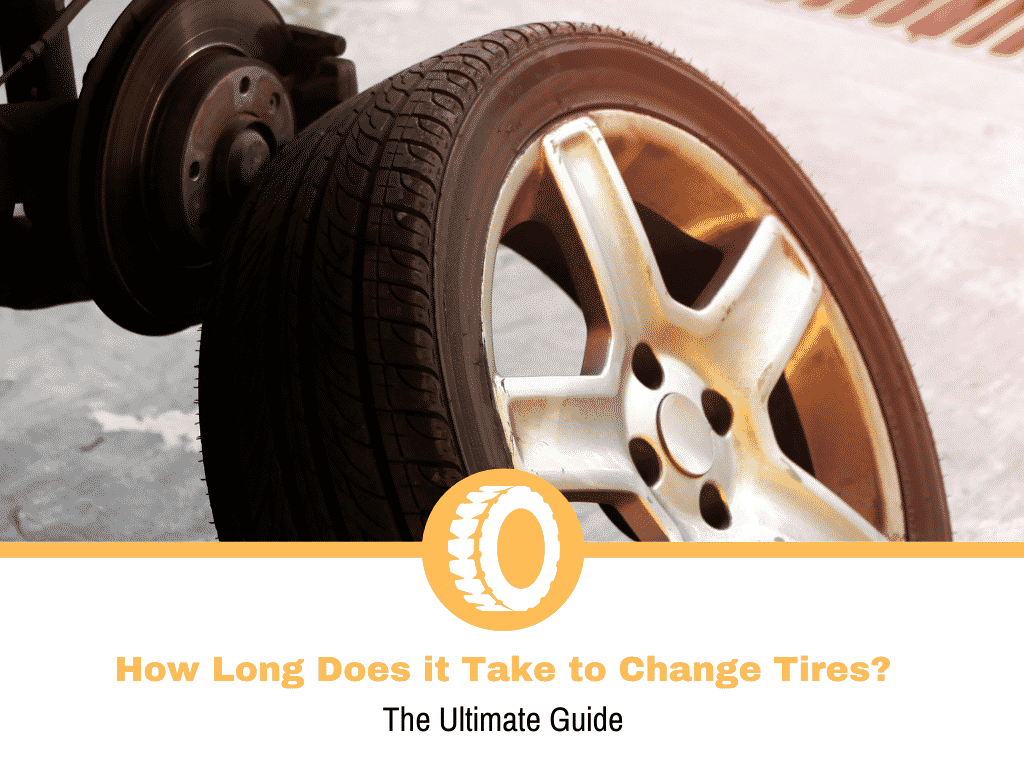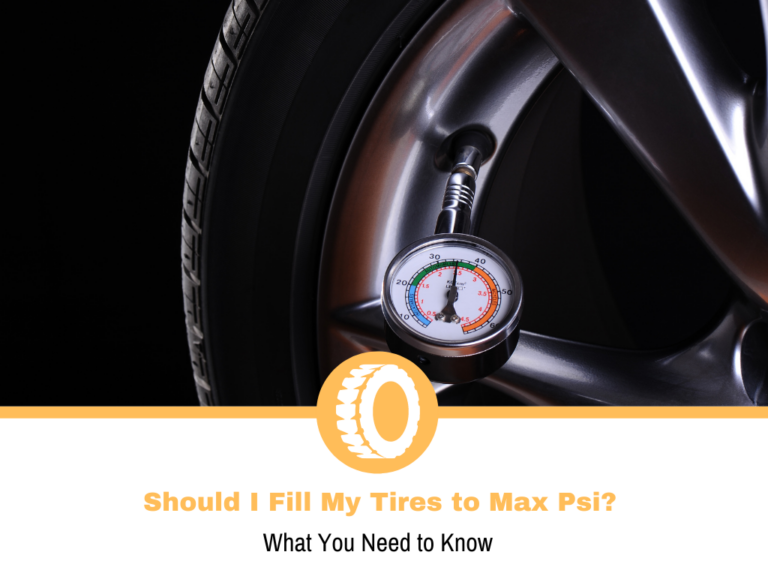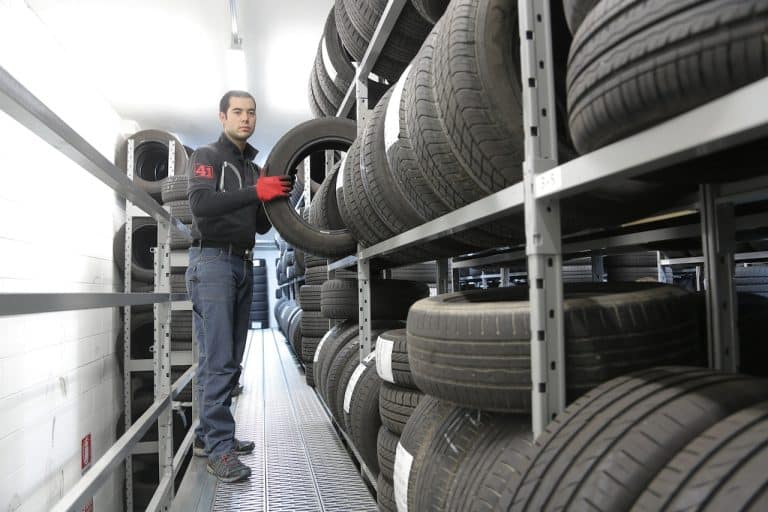How Long Does it Take to Change Tires?
If your tires are already pleading to retire, showing signs that they may totally break down any time, then it may be the best time for a replacement. And if you are in the market for any good deals to save money, naturally, your next pressing question would be: how much time will this tire change take?
The better option is to go to a mechanic. But if you want to do it yourself, pay attention to the tire and closely observe till the point foam starts to leak out from the valve stem portion.

How Long Does it Take to Change Tires?
Industry average suggests that tire changing process will only take up from 10 to 15 minutes per tire by a professional with proper tools, equipment, and years of expertise.
However, the whole procedure usually takes longer, since the majority of the delays were caused by “in-between” factors and not the procedure itself.
Signs you’ll need a tire change
Regardless of your driving habits, road condition, or frequency of car usage, tires are meant to wear down in the process and a replacement is inevitable. But before calling your preferred service center to inquire if your tire size is available, or checking out what you’ve just added to your cart, these signs will initially determine if a tire change is needed.
Flaking, Bubbles, and other visible damages
These are discernable indicators that your tires are already retiring. Commonly seen at the sidewall of your tires, these factors can be easily noticed and don’t need an expert to be identified.
Tire Loses Air Faster
Have you experienced inflating up your tire to its optimal pressure before you go, just to spot them nearly deflated when you get home? Normally, tires lose air pressure up to 3 psi in a month due to osmosis, anything greater than this might indicate that it may have problems only a tire change can address.
Significant Tire tread wear
The most practical reason to change a tire is the loss of traction due to worn-out tire tread. Depth can be verified through tire wear indicators within the groove. This also applies to uneven tire wear (inside, outside, or center) as these cannot be remedied.
The smartest and fastest approach to identify what really needs to be done to your tires is to have them checked by professionals in an authorized tire shop.
The catch is you’re wondering why it takes too long for these guys to accomplish if tire change itself can be done under an hour?
Factors that affect how long tire change will take
Each tire change experience is unique and the results are varied. That being said, how much time tire change will take also relies on the in-between processes aside from mounting them to the tire changer machine alone.
The size of the tires
Bigger vehicles such as pickup trucks and SUVs have more lug nuts that need to be removed than compact cars and sedans, not to mention its weight per tire that can add up to the cycle time.
Wheel condition
Jammed lug nuts are a common thing for wheels that have accumulated deep-seated mud and dirt. Experts might also carry out minor repairs to the wheels prior to the installation of new tires to ensure proper fitment.
Timing your Visit
Peak days and time also affect how fast you’re going to be catered by a staff to get your tires replaced. Remember, a well-known service center is, for sure, a busy one.
Tire changing process
Now you understand the factors that influence the speed of having your tires changed, let’s look at how the process works in the first place.
Vehicle is queued for a lift
After the job order is prepared by the staff, your car is queued up for a lift to remove all the wheels. Usually, tire experts will conduct a pre-assessment prior to lifting to get advance information of your tire and wheel condition.
Lug nuts and wheels are removed
Thankfully, modern service centers use highly efficient pneumatic impact wrenches to remove even the most stubborn lug nuts. Keep in mind though that these nuts can be subjected for a replacement as some have loose ends or thread due to rust or previous improper removal.
Then, the tires will be deflated by unscrewing the stem valve. Lastly, they will be separated from the wheel with the use of a tire changer machine for faster tire removal.
New tires will be mounted and balanced
Using the same tire changer machine, new tires will be mounted to the wheels. Then a balancing is required to prevent tire wobbling and hopping up or down and to promote proper wear, so the previous balancing weights used are removed and also replaced with a new set in the process.
Wheels will be reinstalled and inspected
The last procedure is to reinstall the wheels to the vehicle, fastening up the lug nuts, securing proper torque with an appropriate wrench and then lowering the vehicle. Some shops conduct a test drive around the block to verify if the tires are balanced and aligned as part of their final inspection.
Simple tricks for a faster tire change
Realizing that taking your car for a tire change can be time-consuming is enough to discourage you to undergo this important maintenance procedure. Having said that, you might want to check out these simple hacks, though not guaranteed but will surely save your precious time.
Schedule an appointment
Scheduling an appointment secures you a spot to your preferred time. A short, 5-minute phone call days prior to your visit wouldn’t hurt. However, if you’re skeptical if the policy is being followed, consider the next hack below.
Take advantage of non-peak days/hours
Steer clear of going on weekends, Fridays, and Holidays if you want a faster transaction. The same is true with certain times of the day such as early in the morning as people frequently clog during these hours. Preferably, visit during midweek on a midday when the majority of people are already at work and least likely to spend their time at the workshop.
Check out reviews of your prospect tire shop
The power of word of mouth can make or break a business success. These are collective honest feedback from the people who have previous experience with your prospect shop. Checking reviews online prior to your visit will give you an idea what kind service to expect.
Check with the shop of the tire specification prior to visit
This can be tagged along scheduling an appointment days before your visit. This will save you a lot of time and hassle since you’ll be sure that the tires you need are available. Alternatively, you can also bring a set of tires you have recently bought online and just need their services for installation.
Have your tire changed along with your scheduled Periodic Maintenance Visit
Most modern auto dealerships also offer tire changing service, suggesting a one-stop shop for customer’s convenience. You can also save time on this approach since they’ll work on the regular maintenance procedure of your car with a tire replacement at the same time.
Frequently Asked Questions
Do I need to change all 4 tires at the same time?
Ideally, all 4 tires must be changed at the same time even if not all of them wear out equally due to weight distribution, periodic rotation and other factors. One main reason is safety. You can, however, change just a single tire if the remaining tires are relatively new.
How long can I drive with my tires?
Tires have their expiration dates and using them beyond the recommended period might endanger you and your passengers. General rule of thumb is that tires must be replaced after 10 years, 6 years being the optimal timing, regardless of tread condition.
Are tires covered with warranty?
Generally all tires are covered with a manufacturer warranty. This varies from three to five years with a certain mileage whichever comes first. This comes with a handful of certain conditions and policies upon purchase. Some service centers also offer a workmanship warranty that may come as free or paid for a premium.
Conclusion
Tire change processing time varies with a lot of conditions, but generally speaking, it takes at least 10 minutes for each tire to be replaced, and the whole process can be done in less than an hour.
However, having it done in a reputable service center might take a while due to considerable factors.




